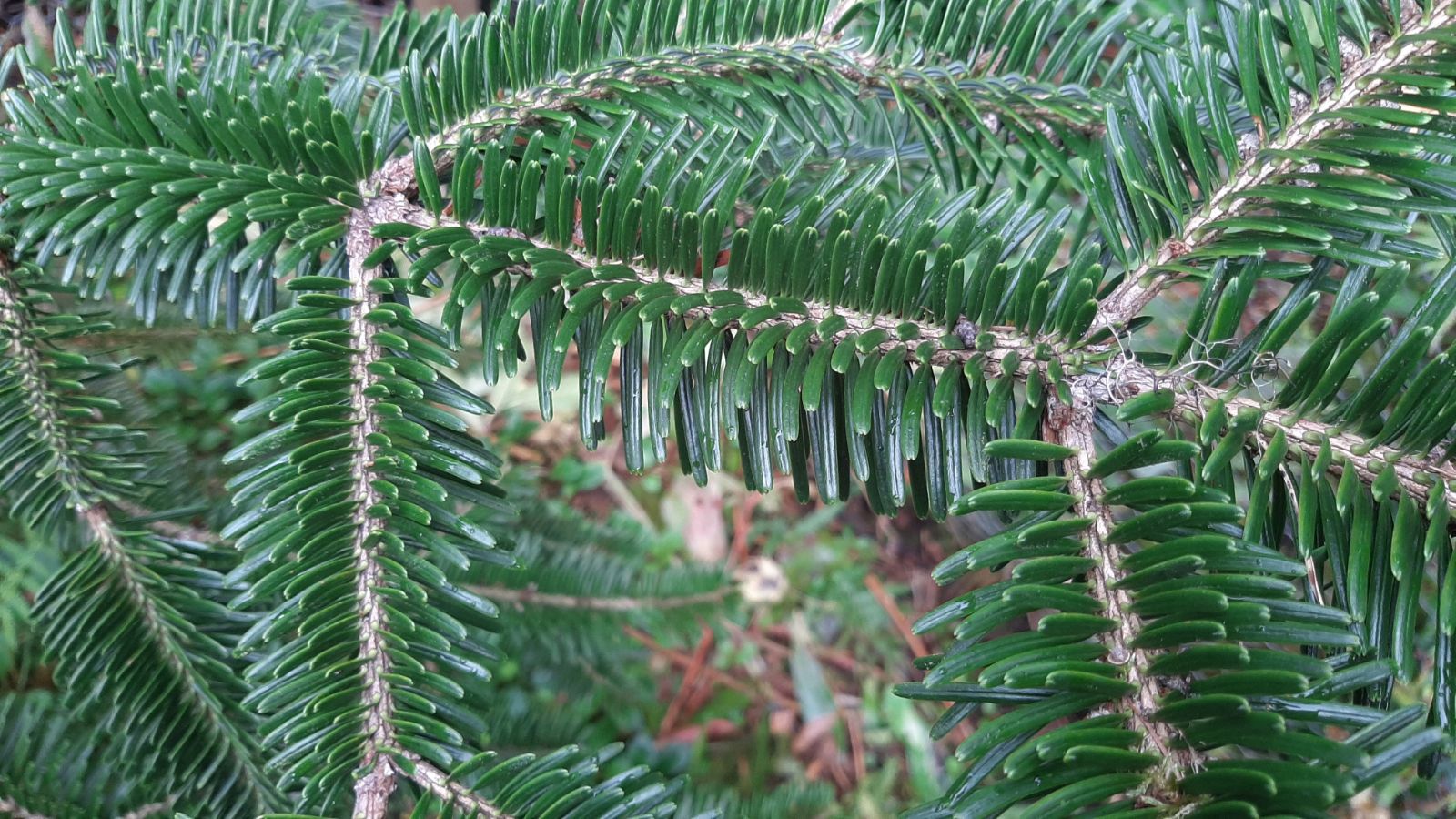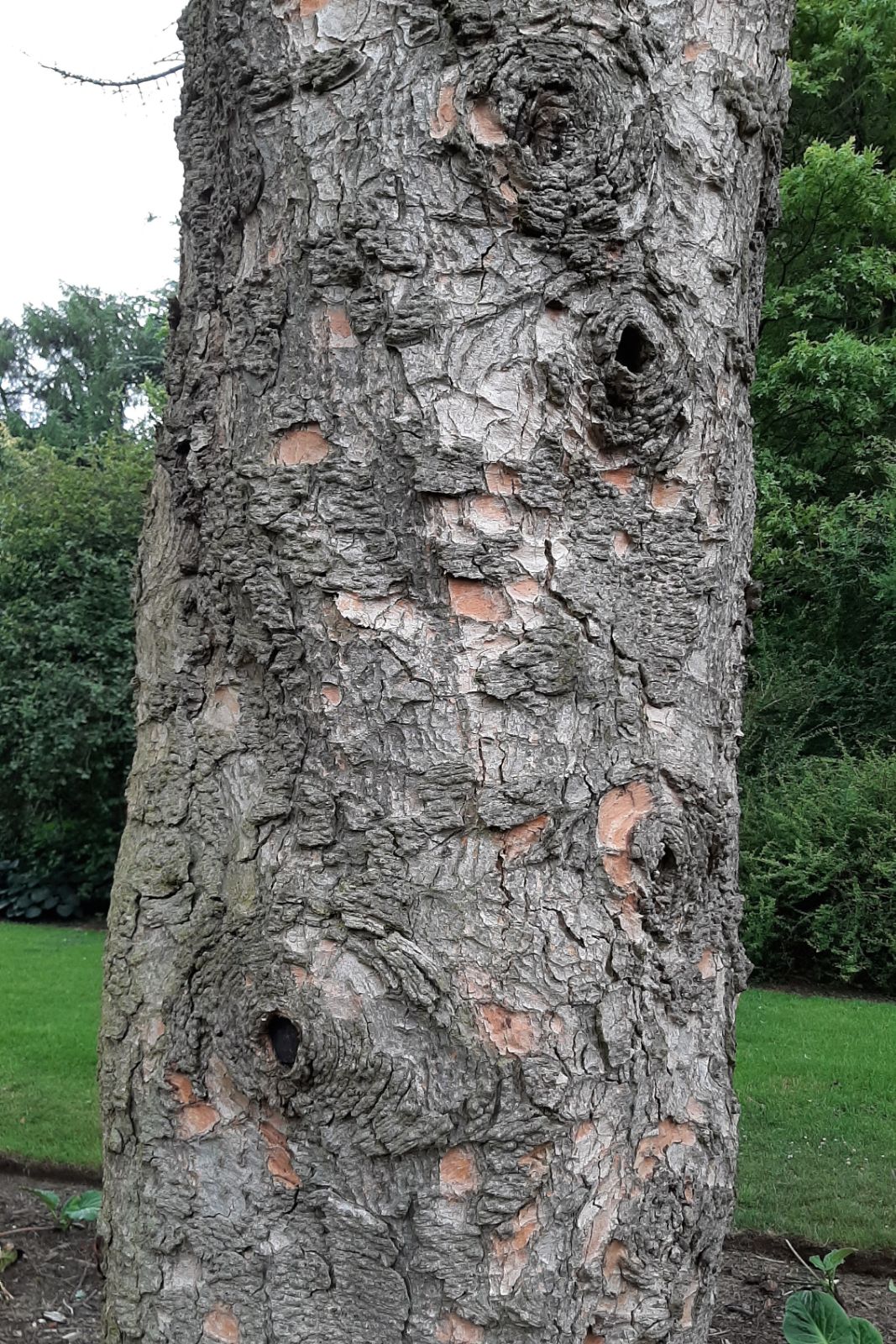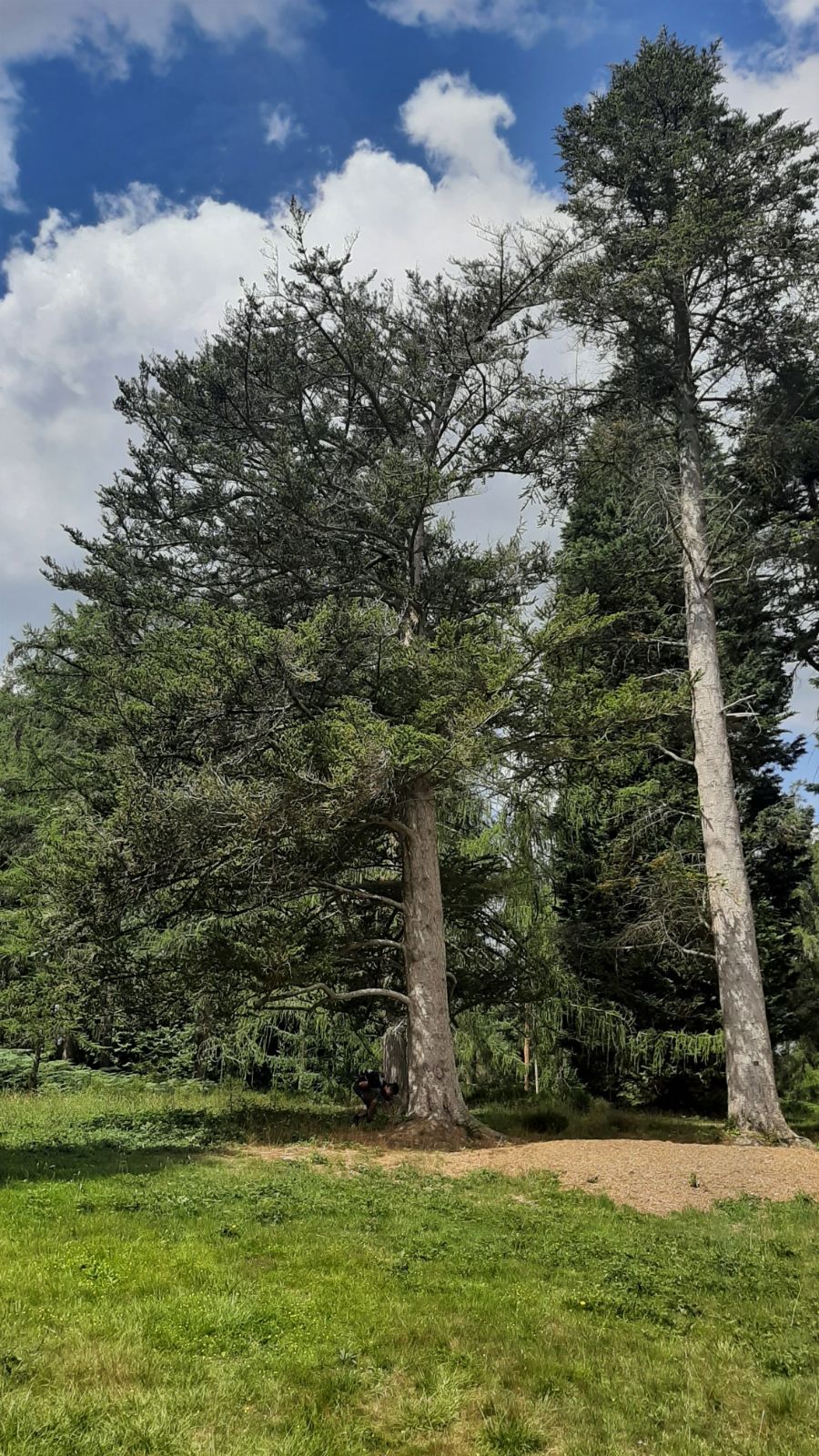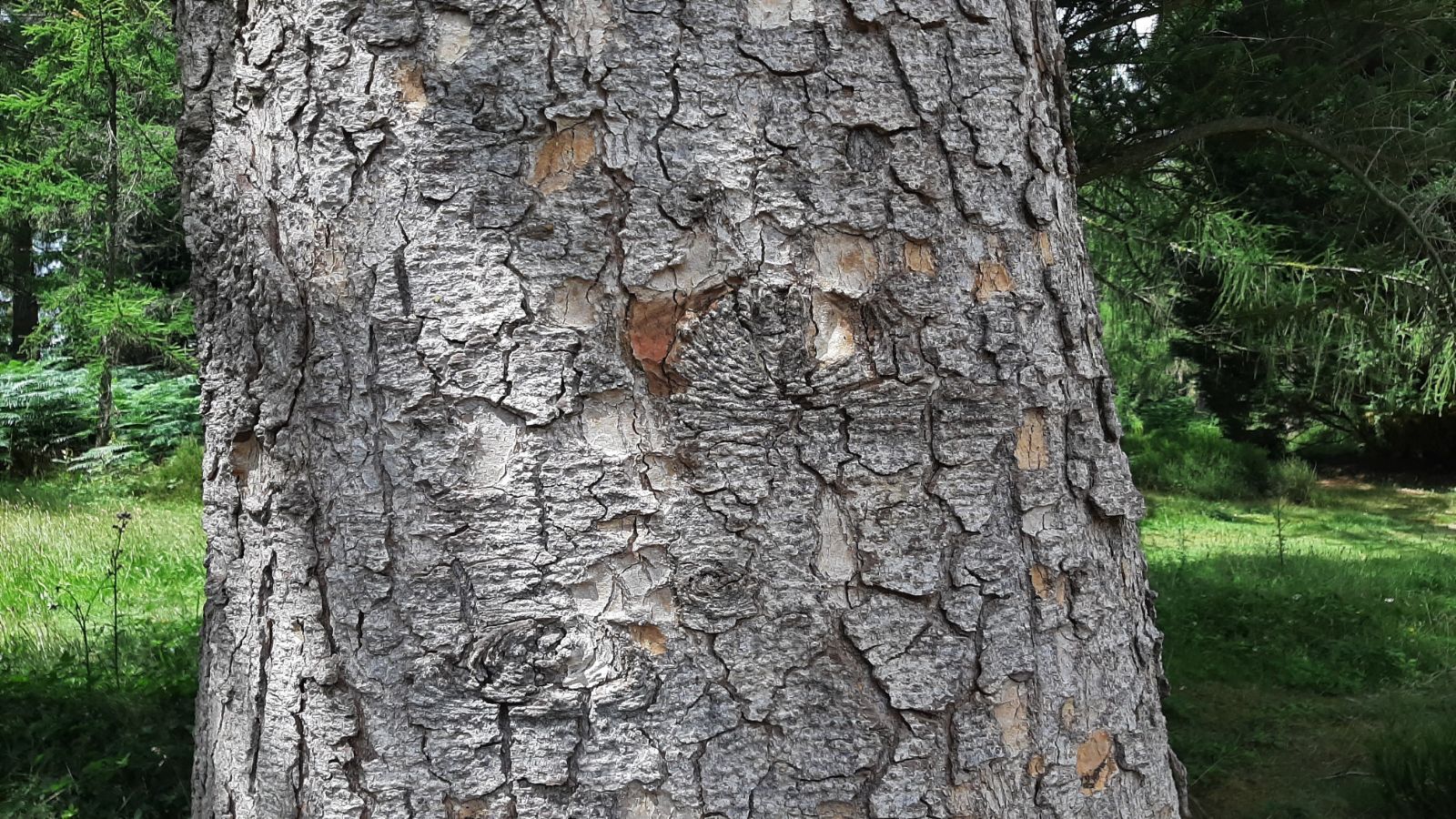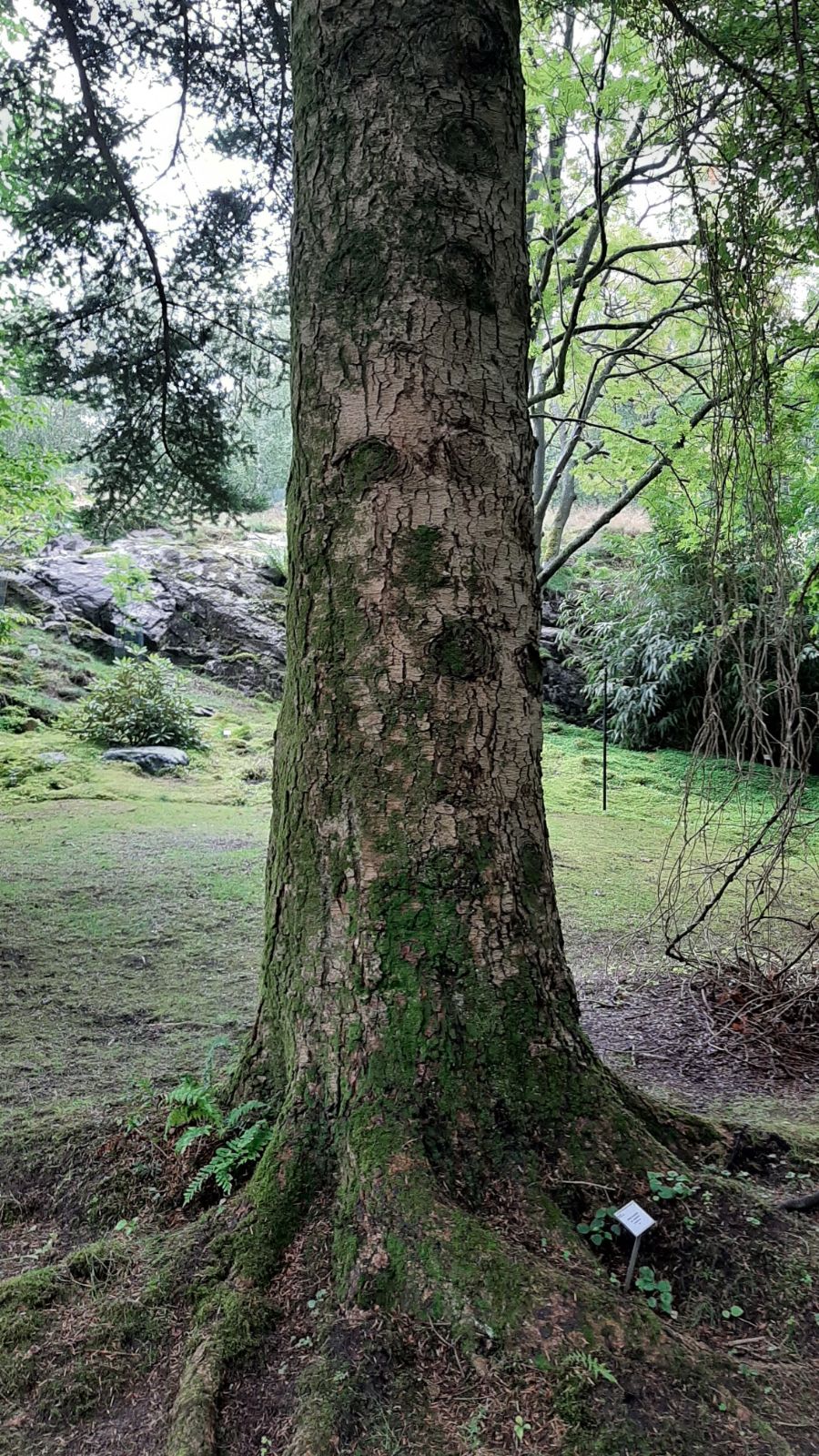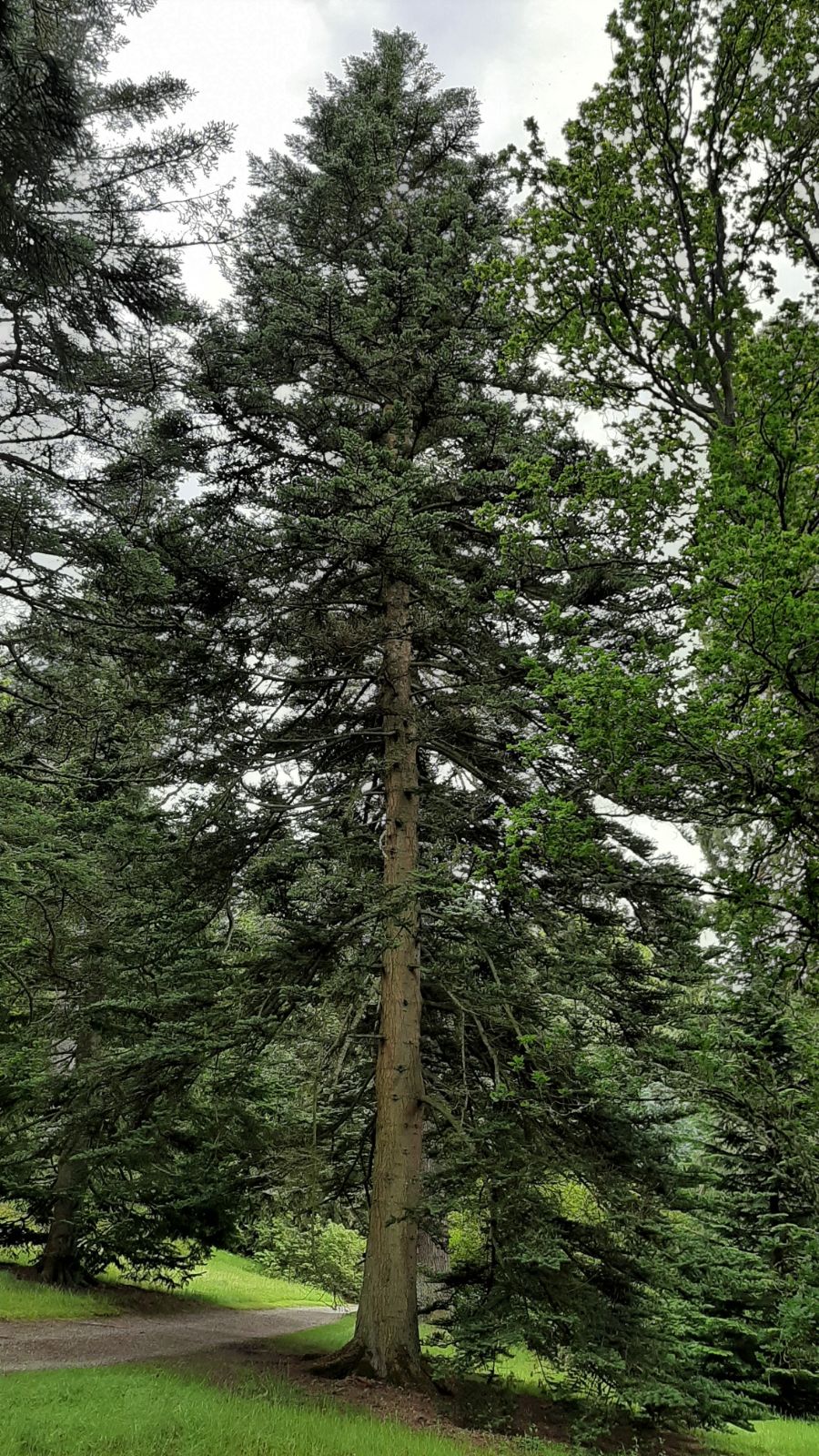Abies × umbellata
Sponsor
Kindly sponsored by
Sir Henry Angest
Credits
Tom Christian (2021)
Recommended citation
Christian, T. (2021), 'Abies × umbellata' from the website Trees and Shrubs Online (treesandshrubsonline.
Genus
- Abies
- A. firma × A. homolepis
Common Names
- Mitsumine Fir
- Dimplecone Fir
- Mitsumine Momi
- Heso Momi
Synonyms
- Abies homolepis var. umbellata (Mayr) Wilson
- Abies umbellata Mayr
Infraspecifics
Other taxa in genus
- Abies alba
- Abies amabilis
- Abies × arnoldiana
- Abies balsamea
- Abies beshanzuensis
- Abies borisii-regis
- Abies bracteata
- Abies cephalonica
- Abies × chengii
- Abies chensiensis
- Abies cilicica
- Abies colimensis
- Abies concolor
- Abies delavayi
- Abies densa
- Abies durangensis
- Abies ernestii
- Abies fabri
- Abies fanjingshanensis
- Abies fansipanensis
- Abies fargesii
- Abies ferreana
- Abies firma
- Abies flinckii
- Abies fordei
- Abies forrestii
- Abies forrestii agg. × homolepis
- Abies fraseri
- Abies gamblei
- Abies georgei
- Abies gracilis
- Abies grandis
- Abies guatemalensis
- Abies hickelii
- Abies holophylla
- Abies homolepis
- Abies in Mexico and Mesoamerica
- Abies in the Sino-Himalaya
- Abies × insignis
- Abies kawakamii
- Abies koreana
- Abies koreana Hybrids
- Abies lasiocarpa
- Abies magnifica
- Abies mariesii
- Abies nebrodensis
- Abies nephrolepis
- Abies nordmanniana
- Abies nukiangensis
- Abies numidica
- Abies pindrow
- Abies pinsapo
- Abies procera
- Abies recurvata
- Abies religiosa
- Abies sachalinensis
- Abies salouenensis
- Abies sibirica
- Abies spectabilis
- Abies squamata
- Abies veitchii
- Abies vejarii
- Abies × vilmorinii
- Abies yuanbaoshanensis
- Abies ziyuanensis
Tree 25–35(–40) m × 0.8–1.5 m dbh, generally resembling A. homolepis in most characters except: young bark beneath detached plates dark reddish- or pinkish-brown in mature trees (cf. yellowish-brown in A. homolepis), bark breaking into large scaly plates with age; seed cones 10–14 cm, yellowish-green (cf. 7–10 cm, bluish or purple in A. homolepis) maturing to light brown, apex rounded or umbilicate (dimpled), bracts incuded or slightly exserted near base, bract scales ~ equal in length to cone scales (cf. bracts included, ~ half the length of cone scales in A. homolepis). (Debreczy & Rácz 2011; Liu 1971).
Distribution Japan Honshu
Habitat In mixed temperate forest in a narrow altitudinal range where the parent species overlap, c. 1000–1100 m asl.
USDA Hardiness Zone 5-8
RHS Hardiness Rating H6
Conservation status Data deficient (DD)
Taxonomic note Usually found in literature as Abies homolepis var. umbellata (Mayr) Wilson, but new molecular evidence supports the long-held view of some that this taxon is a sporadic hybrid and this is better reflected by referring to it as a nothospecies: A. × umbellata Mayr emend. Liu.
Abies firma and A. homolepis are the two of the most widespread firs in Japan. They both occur over vast swathes of that country but almost everywhere they are separated by altitude: A. firma is generally confined to warm-temperate zone forests while A. homolepis is found in cooler environments at higher altitudes and latitudes. They are easily distinguished from one another by their gross morphology; for example, A. firma has longer needles with bifid apices and greenish-yellow seed cones with exserted bracts, while A. homolepis has shorter leaves with emarginate apices and smaller, bluish seed cones with included bracts (Farjon 2017, Debrecz & Rácz 2011).
Where they meet, typically at c. 1000–1100 m asl in central Honshu, trees may be found that combine the bark and foliar characters of A. homolepis with the greenish-yellow seed cone colouration typical of A. firma. Such trees were described by Mayr under the name A. umbellata in 1890, but in 1916 Wilson reduced this to a variety of A. homolepis following his visit to Japan. Others had earlier lumped it within A. firma (Elwes & Henry 1906–1913) but Wilson’s treatment stuck and has been broadly accepted since, with those supportive of it quick to explain away the greenish-yellow cones as a manifestation of a known phenomenon in Abies – that some species can show sporadic variation in seed cone colouration (Debreczy & Rácz 2011).
However, even as long ago as the early 1900s it was suggested that A. umbellata was a naturally occurring hybrid of the Nikko and Momi Firs (Elwes & Henry 1906–1913), and other authors have continued to support this theory (e.g. Liu 1971, Rushforth 1987). The question may finally have been resolved by recent molecular research that shows such plants represent a sporadic, naturally occurring hybrid of the Nikko and Momi Firs (Aizawa & Iwaizumi 2020), lending new evidence to Liu’s approach of amending Mayr’s original name to A. × umbellata (Liu 1971).
Mayr sent material to the Arnold Arboretum in 1891. Two trees appear to survive from this introduction in 2020, though both are probably nearing the end of their lives. One is described as ‘fair’ and 24.8 m (plant id 12417*B) and the other as ‘poor’ and 26 m (plant id 12417*A, growing in the arboretum’s Peters Hill area) (Arnold Arboretum 2020). Wilson later introduced A. × umbellata under W 7707 (not W 4078 as stated in New Trees, which is also extant in collections but which is A. fabri). Both are represented at Dawyck, Scotland, and the tree discussed in New Trees (as homolepis var. umbellata) is genuine, but probably from W 7707 or another gathering, not from W 4078. The Dawyck tree (accession 19795068*A) is the reigning UK and Ireland champion for height and girth. Planted in 1924, by 1961 it was 15.8 m × 0.33 m dbh, in 2001 it was 24.5 m × 0.71 m dbh, and by 2014 it was 27 m × 0.76 m dbh (Mitchell 1972; Grimshaw & Bayton 2009; Tree Register 2020).
Several young grafted trees labelled A. × umbellata (or more often A. homolepis var. umbellata) can be found scattered through collections in the UK, but unfortunately most of these are not genuine. Many scions were taken from a well known – perhaps we should now say infamous – tree that still grows just north of the John Hope Gateway at the RBG Edinburgh (accession 19715734*A). For many years this was erroneously labelled A. homolepis var. umbellata. More erroneously still, while bearing this name it was briefly assumed to be a sister seedling to a genuine tree of W 7707 which grows nearby (accession 19151007*A, see images below). Although this has now been rectified and the impostor correctly labelled A. forrestii × homoepis, the mistake has, over time, contributed to various misconceptions about A. × umbellata, and one of the consequences is that many scions from that tree are now growing in collections bearing the wrong name. Those lucky enough to have a scion should count themselves very fortunate indeed, for it is a particularly beautiful hybrid (and is discussed further under A. forrestii × homolepis), but collectors of names must look elsewhere for A. × umbellata.
Returning to other, genuine material, a tree of W 7707 grows at the RBG Edinburgh where it is beginning to look a little worse for wear after the effects of several storms (pers. obs.). It was propagated in the early 1990s and scions are now growing at Benmore and Dawyck (BG-BASE data 2020). Grimshaw & Bayton’s (2009) observation that this taxon ‘is generally more written about than grown’ remains true, but other examples, including an intriguing plot at the Rogów Arboretum in Poland discussed in New Trees, will not be discussed here until their identity can be verified. During the course of research for this account several other genuine trees were discovered in collections including Bedgebury and the Yorkshire Arboretum in the UK, though never labelled as this taxon, which suggests there may be more waiting to be found.
'Tomomi'
Synonyms / alternative names
Abies homolepis 'Tomomi'
Abies homolepis var. tomomi (Bobbink & Atk. ex Rehder) Dall. & A.B. Jacks.
A fir circulated under various permutations of the name ‘tomomi’ in the north east USA at the beginning of the 20th century, and it is generally reported that it was first raised here, perhaps in the Arnold Arboretum. The Bobbink & Atkins nursery of New Jersey was probably the first American firm to offer it for sale, and it was from here that it was imported into European collections in the first years of the last century (Jacobson 1996).
However, Auders & Spicer (2012) note that material under this name was offered for sale by the Yokohama Nursery Co. Ltd. in Japan as early as 1899, and this now seems the most likely origin of material later propagated in the US. A tree in the pinetum at Wakehurst Place, UK, labelled A. homolepis ‘Tomomi’ (id 21256, and discussed as var. tomomi by Mitchell (1972)) is referable to A. × umbellata; it combines the foliage of homolepis with the cone of firma and is a classic fit for this hybrid (pers. obs. 2020, 2021). If it is ultimately traceable to Japan it may have been raised from wild or cultivated trees, and it is doubtful we will ever know for sure. Whatever the origin, the name is worth conserving as a cultivar or cultivar group (it is probably a hybrid swarm rather than a distinct clone) because of its long history.

